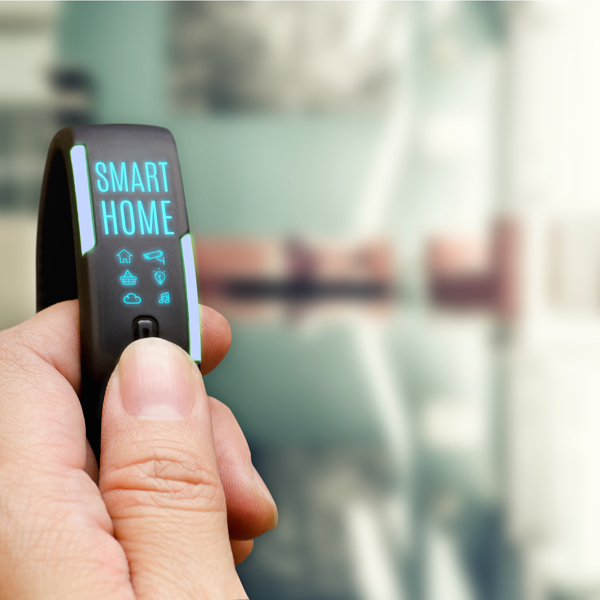Smart home technology, sometimes known as home automation or domotics, offers safety, ease, functionality, and energy efficiency for consumers by empowering them to operate connected devices, often from a smart home app on their mobile or other connected devices.
Generally, smart homes use Internet-connected technology for remote surveillance and control of devices and systems such as lighting and heating. Smart home networks, applications, and the Internet of Things (IoT) work together to exchange user data and execute actions based on the homeowners’ desires.
This article will examine the benefits of smart homes, and how specific appliances in your home can improve your domestic life.
Benefits of Smart Homes
You might think of home automation as an elegant way to keep up with emerging technology, or as an opportunity for homeowners to show off. However, home automation brings some impressive functional advantages as well.
Improved Quality of Life

Smart refrigerators feature a touchscreen interface and connect to the Internet through Wi-Fi to provide several additional features. Smart fridges tell you what to shop for and eat, when to change the water filter, and turn the icemaker on or off.
IoT-enabled cushions, blankets, and beds can track your sleep activity can provide insights that boost your sleep quality. A smart bed allows you more comfort and power over the location of your sleep while optimizing how your body is supported.
More Convenience
Automated waste pots help to keep your hands clean while working in the kitchen. This way, you don’t have to interact with the garbage lid, avoiding contact with any harmful microbes. You also don’t need to wash your hands after.
Smart TVs are also becoming widespread. Consumers can access media services and run applications, browse the Internet, access music channels on the Internet, shop online, and access video services on demand. Many smart TVs even provide virtual assistant voice-recognition systems, such as Amazon Alexa, to help change channels, regulate volume, and search services.
More Eco-Friendly
Our showers are about to get more eco-friendly with the power of IoT. Smart showers will consider your preferences, such as your desired water’s temperature, the volume of water, and the shower’s length. You can access your shower with smart home connectivity through its control panel, voice command, and mobile application.
Innovations such as smart lights and smart thermostats will also become more prevalent. When no one is home, the lights will shut off automatically, and the thermostat will reduce the temperature. These measures will help us conserve energy when we’re not home.

The Artificial Intelligence of Things (AIoT)
The Internet of things (IoT) and artificial intelligence (AI) are essential technologies driving our future. However, when you merge AI and IoT, you get an even more powerful technology: AIoT—the artificial intelligence of things.
Artificial intelligence helps establish programmable mechanisms and processes that help devices think, understand, and organize data. Not only can smart homes optimize your home’s appliances and electrical devices, but it can get to know your habits and make adjustments to improve your in-home experience.
Essentially, IoT devices are the digital spinal cord of the whole system, while artificial intelligence is the network’s brain.
Challenges For Smart Home
Over the past three or four years, the smart home industry has experienced substantial growth. However, it hasn’t yet reached its true potential, as several underlying challenges keep customers from entirely buying in.
Battery Life for Edge Devices
Edge devices are those at the end of a line of communication. For example, modems, routers, switches, and computers are typical edge devices for a communication network. These devices are mostly battery-powered, making battery life a pressing concern for product designers and engineers.
Compatibility Issues
Any user’s smart home space has the potential to become too fragmented. Unfortunately, most consumers won’t go through the effort of installing multiple separate applications in their homes to monitor the technologies. Instead, they want interconnectivity and computability. Although there’s been some development in his area, we’re only starting to scratch the surface.
Security Vulnerabilities
As with any technology involving the transfer of personal data, security is a significant issue. As smart home technology becomes more integrated into our lives, it will only increase the need for better security. Smart devices are starting to know everything about our daily routine and us, so it’s vital that information remains secure and protected.
How Ambiq is Helping
IoT devices that form the building blocks of smart homes must be reliable when it comes to battery life. Since these devices perform commutating operations at the edge, they need to ensure their processors can perform these tasks on a low electrical charge.
Ambiq’s ultra-low-power wireless SoCs are at the core of dozens of edge devices that help critical technologies needed by connected homes and smart buildings, including Bluetooth Low Energy. IoT devices powered by Ambiq products can continue to grow and develop in the connected home.



